
AI can create content quickly, but this speed doesn’t always resonate with the target audience. That’s the problem today: smart tools can generate words in seconds, yet the results often feel distant or mechanical.
That’s where AI humanizers come in handy. These tools help bring together machine efficiency and human touch. Especially for writers, marketers, and creators, they’re becoming extremely important, not just for sounding more natural, but for avoiding getting flagged by AI detectors and forming a connection with real readers.
In this guide, we’ll look at 10 AI humanizers, what sets them apart, and how they can strengthen the tone and credibility of your content. But exploring the tools themselves, it’s worth knowing why these humanizers matter in the first place.
Understanding AI Humanizers
AI humanizers are specific types of software that help turn the AI-generated text into something more natural and human-like. They perform this through rephrasing sentences and changing the pattern of the content. To make the text more accessible to human readers, the focus is on improved readability and interest. This raises an important question: why choose AI humanizers? Content creators and students looking to master both AI generation and humanization techniques can explore comprehensive training resources on platforms like Coursiv that teach the strategic use of these tools within broader content creation workflows.
Why Use an AI Humanizer?
AI-generated content is rapidly created, but often falls flat when it comes to establishing a connection with the reader. That’s where AI humanizers play their part; and they make the words feel like they came from someone who’s actually thinking, not just predicting.
SEO Benefits: Google and other search engines are increasingly favouring content which feels natural and human. If your content seems like it was written by a machine, it could hurt your search visibility. AI humanizers actively address these issues by making sure your writing feels genuine and reader-friendly.
Better Readability: AI-generated content often sounds mechanical, with awkward phrasing, strange pacing, or lifeless tone. A humanizer redrafts that into something smoother and engaging to read.
Quality Assurance: If you start with a well-written AI draft, chances are it might need heavy edits. Humanizers act as a final refinement tool, ensuring the output meets a higher standard before you hit publish.
Now that we’ve gone over why humanizers matter, let’s get into some of the best tools available today.
The Top 10 AI Humanizers
Here’s a detailed look at the best AI humanizers available today, each offering unique features and capabilities.
1. Humanize AI
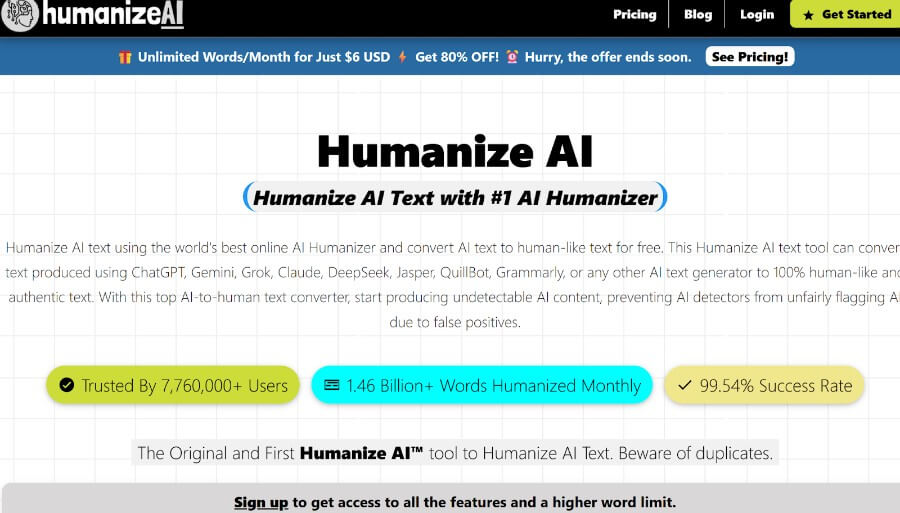
Overview: Humanize AI by humanizeai.io helps reshape stiff, robotic AI text into something that actually sounds like it came from a person. The interface? Simple enough that you don’t have to think twice. No tool is perfect, but this one gets past AI detectors without much hassle.
Key Features:
No cap on the words per month for a low subscription fee.
Provides various writing styles and tones.
Allows the users to implement keyword freezing.
Pros:
Very easy and simple to use without having to do any registration.
Extremely high and consistent accuracy in producing undetectable content.
2. Undetectable AI
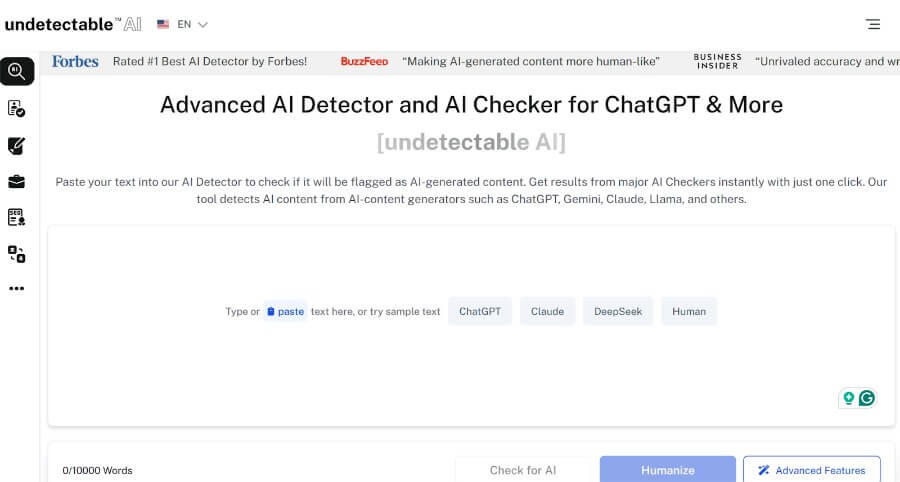
Overview: This tool pulls double duty, it checks your content with AI detectors and then helps you humanize it without any issues. You can see how your text holds up across different detection systems, all in one place. Makes tweaking of the content a whole lot easier.
Key Features:
Simple and great humanization.
Multi-tool choice for both detection and rewriting.
Pros:
Fast and efficient for quick edits.
Good reputation amongst the people and in the industry for its reliability.
Cons:
- Monthly word limits may be off-putting to people on a budget.
3. Surfer SEO (Humanizer)
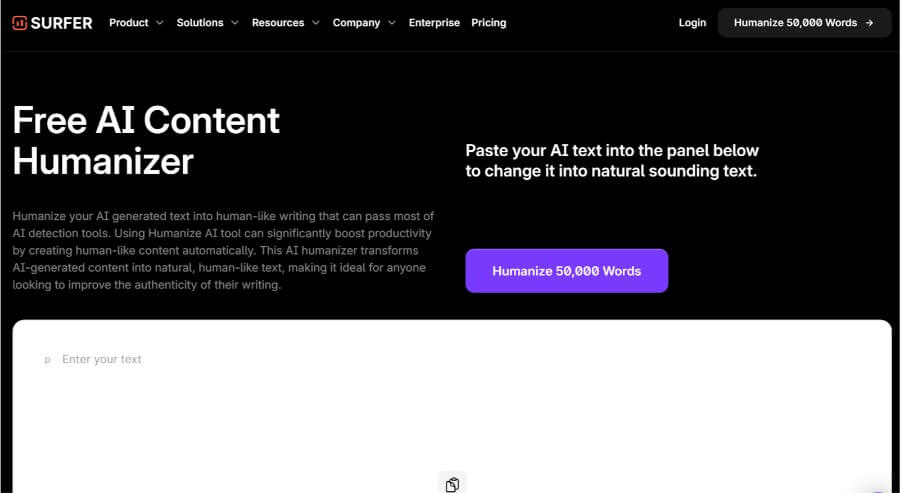
Overview: Surfer SEO is mainly used for search optimization, but its humanizer does something extra, it takes AI-written content and improves the flow and delivery, making it sound more authentic without losing SEO value. It’s like refining your draft so both people and algorithms stay happy.
Key Features:
Let you use SEO context for better keyword management.
Users can deploy custom voice settings for personalized output.
Pros:
Really good for content creators focused on SEO.
High-quality output for search engine ranking.
Cons:
- Requires a very expensive Surfer subscription.
4. Hix AI
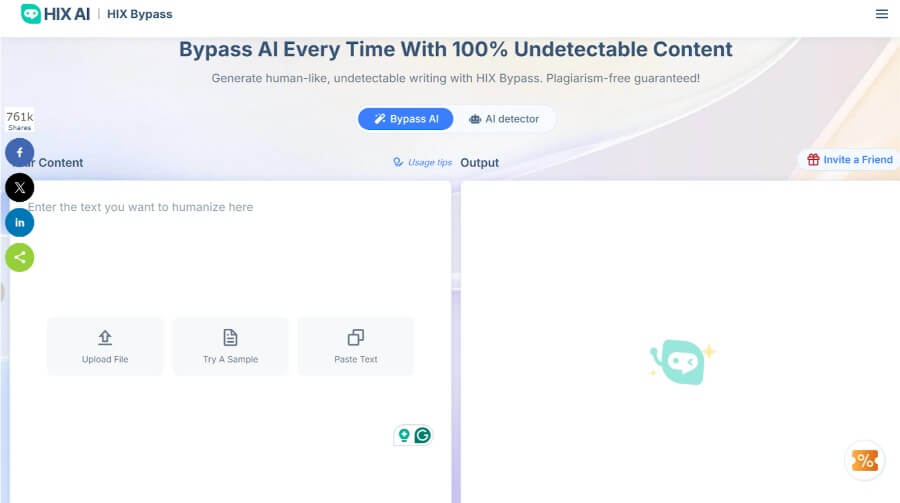
Overview: Hix AI takes a different route with its HIX Bypass tool. The focus for this tool isn’t just on sounding natural, it’s on helping AI-written text remain undetectable even with the more advanced detection systems.
Key Features:
Number of rewriting modes (Fast, Balanced, Aggressive).
Utilizes internal checks for various AI models.
Pros:
Flexible options for different rewriting needs.
Large word input plan for users on higher-tier plans.
Cons:
- Some users report crashes while generating output.
5. WriteHuman
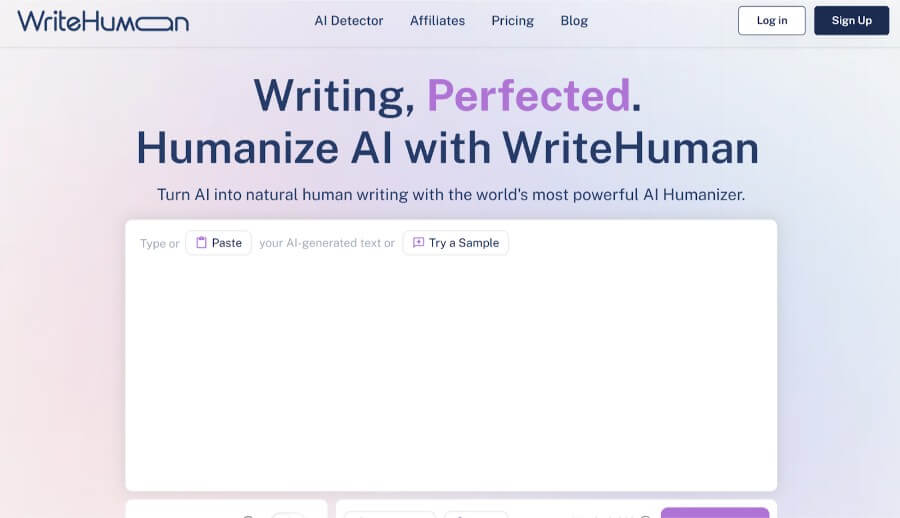
Overview: WriteHuman keeps things very simple. It takes AI-generated text and repurposes it into something that feels more relatable and human-sounding. Whether it’s for emails, blogs, or something else entirely, the output feels very human.
Key Features:
One-click humanization.
An in-house AI detector for checking content authenticity.
Pros:
A Budget-friendly option with a free version available.
User-friendly for quick edits.
Cons:
- Output may require extra work for the desired results.
6. QuillBot
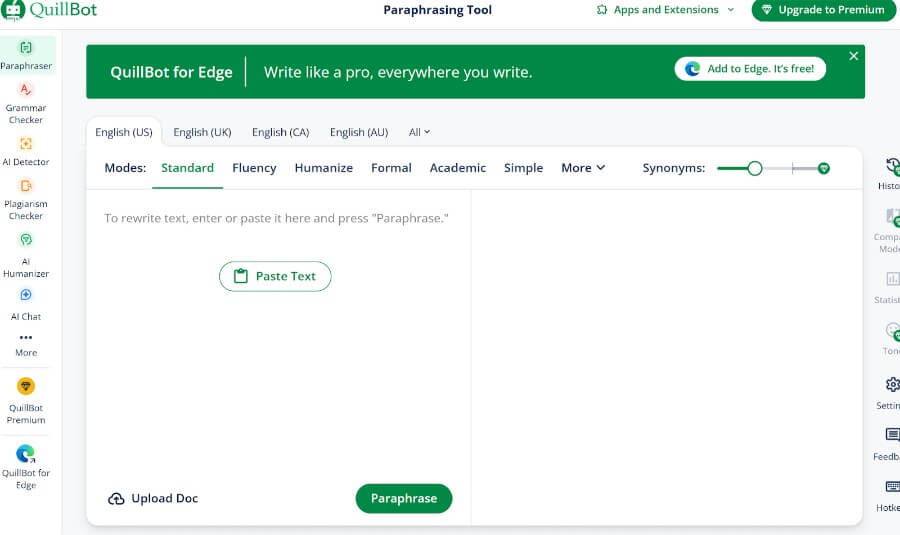
Overview: QuillBot, which is talked about for its paraphrasing ability, is a decent humanizer, too. It rewrites sentences just enough to smooth out the rhythm and make things flow more naturally.
Key Features:
A variety of paraphrasing modes, which includes a specific “Humanize” option.
Grammar checking and summarization features.
Pros:
A handy and versatile tool for various writing needs.
A high-trust brand with regular updates.
Cons:
- General-purpose nature may result in unintended meaning changes and accuracy issues.
7. Stealth Writer
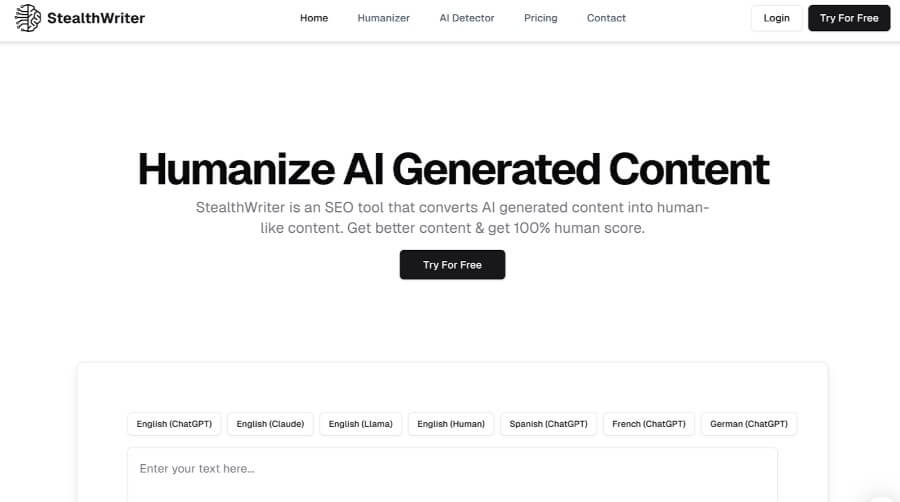
Overview: Stealth Writer is a known brand in the SEO space, but it’s also a capable AI humanizer. It makes your text sound natural and helps it get past AI detectors. It blends optimization and subtle rewriting that aims to satisfy both sides—readers and algorithms.
Key Features:
Internal AI detector for pre- and post-humanization checks.
Proprietary rewriting models for catering to different styles.
Pros:
Fast and efficient with acceptable and decent results.
Affordable entry-level pricing.
Cons:
- Output quality can be inconsistent, requiring a lot of manual adjustments.
8. Uncheck AI
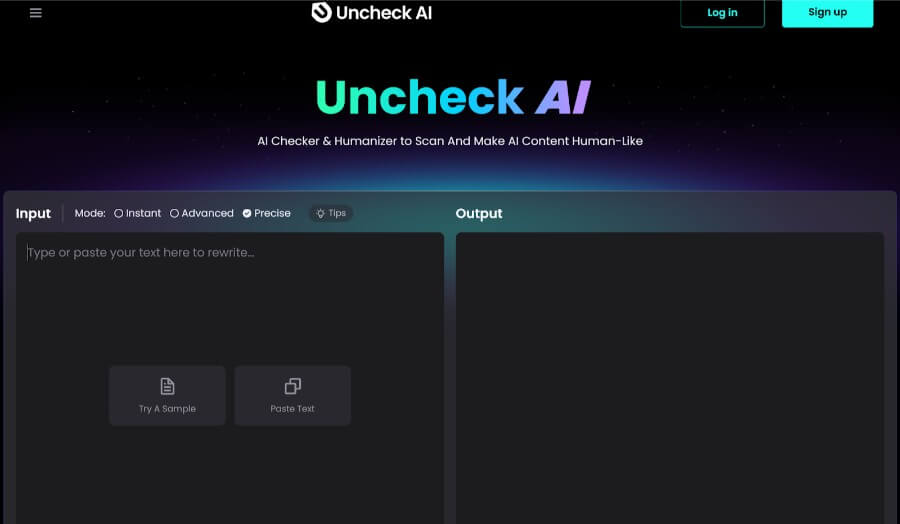
Overview: Uncheck AI’s focus is on making AI-generated content feel more genuine. It works by carefully adjusting the tone and tightening up the readability.
Key Features:
Allows for contextual analysis for relevant suggestions.
Features include plagiarism checking to ensure originality.
Pros:
It puts emphasis on style and polish over mere rephrasing.
Supports multiple languages.
Cons:
- It has limited independent and transparent reviews of its output effectiveness.
9. BypassGPT
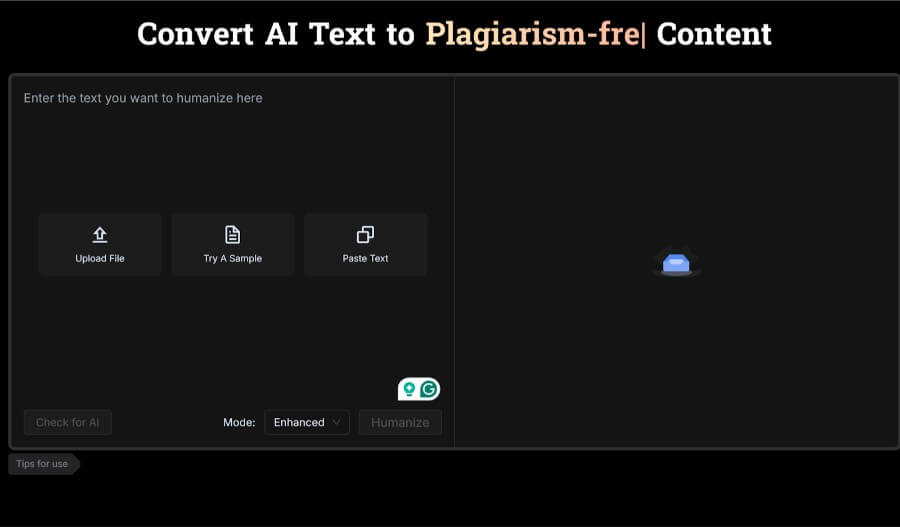
Overview: BypassGPT aims to turn plain AI text into something that feels more creative and more human. It even claims to hit a 100% human score on detection tools, though how consistent that is probably depends on the input.
Key Features:
Creative rewriting modes for the desired output.
Built-in tools for plagiarism checking and also removal.
Pros:
Main target market is writers and students with user-friendly features.
Provides a trial version for new users.
Cons:
- Some rewrites may fall far from the mark in terms of clarity and coherence.
10. Scribbr
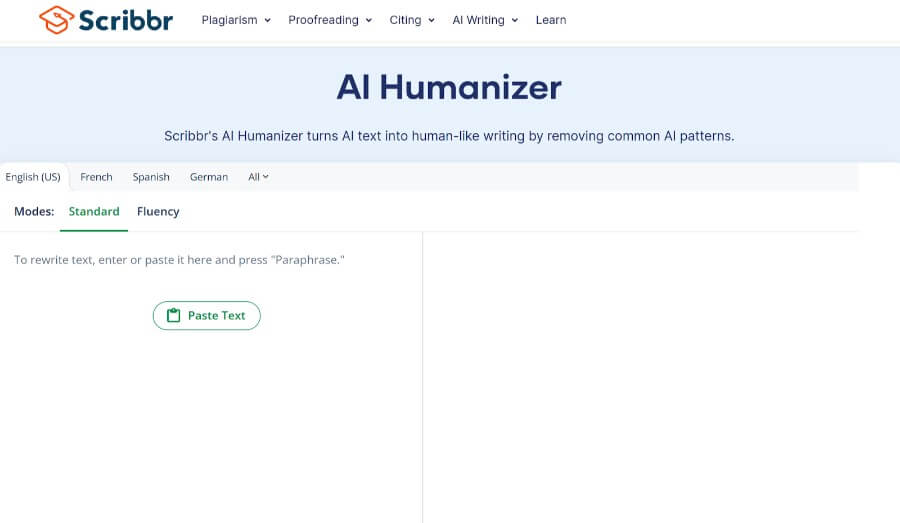
Overview: Scribbr is widely known in academic circles for proofreading, but it’s added an AI humanizer to the mix. It’s meant to clean up AI-generated text, making it sharper, clearer, and more natural sounding for formal or academic use.
Key Features:
Gives phrase suggestions to the users to help them improve clarity.
Focuses on maintaining the original meaning while improving the readability.
Pros:
Great output, which is suited to academic writing.
Well-regarded in academic circles for its plagiarism detection features and tools.
Cons:
- Not impressive for bypassing AI detectors.
11. UnAiMyText
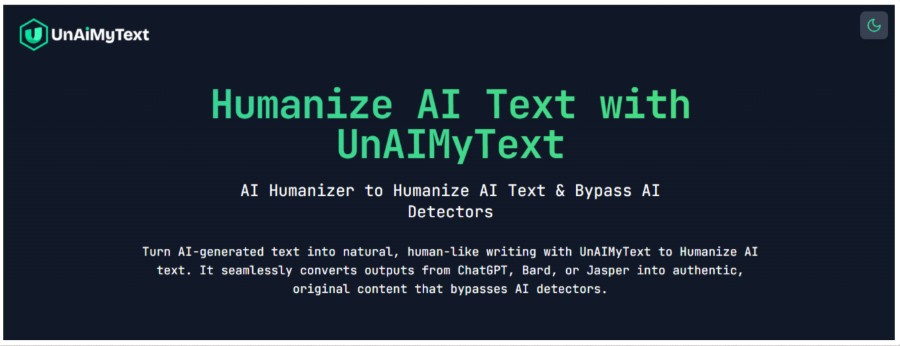
Overview: UnAiMyText is an advanced AI humanizer tool designed to make AI-generated content sound more natural, authentic, and human-like. It helps writers, marketers, and businesses transform robotic or repetitive AI text into engaging and contextually accurate copy that resonates with readers.
Key Features:
UnAiMyText ensures that each sentence retains its original meaning while improving tone, flow, and readability.
The tool refines text to pass AI detection systems, making it suitable for publishing on professional or SEO-driven platforms.
Pros:
Enhances the quality and emotional depth of AI-written content.
Saves time by offering one-click optimization for long-form content.
Con:
- May slightly alter the writing style if the original tone isn’t well-defined.
If you still cannot decide which tool fits your needs, the next section can help. Let’s have a closer look at how to choose the right AI humanizer based on what matters most to you.
How to Choose the Right AI Humanizer?
When selecting an AI humanizer, consider the following factors:
Purpose: Determine whether you need the tool for SEO, academic writing, or general content creation.
Budget: Evaluate the pricing plans and choose one that fits your budget while offering the features you need.
User Experience: Look for tools with intuitive interfaces that make the editing process seamless.
Output Quality: Test the tool with sample texts to assess the quality of the humanized output.
Bringing It All Together: Why AI Humanizers Matter
AI humanizers are useful for anyone who wants to make AI-written content better. They turn robotic-sounding text into writing that feels more like a person wrote it. This doesn’t just make it easier to read - it also helps with SEO.
If you’re someone who creates content, does marketing, or is a student, getting an AI humanizer can step up your writing game. Take a look at the choices we talked about earlier to find one that works for you. Then you can start making content that connects with the people you’re trying to reach.